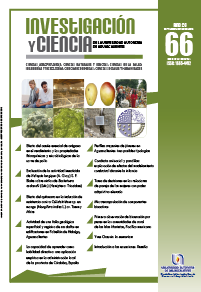Antisocial behavior and gangs: study of behavioral modeling effects during childhood
DOI:
https://doi.org/10.33064/iycuaa2015663569Keywords:
cliques, gangs, Social Learning Theory, behavioral modeling, childhoodAbstract
A study was made of variables related to behavioral modeling received during childhood by a group of 80 gang members in the city of Aguascalientes, Mexico, all them active members of 30 gangs. The procedure followed was based on the Social Learning theories of Bandura (1982) and Akers (2006). Research data used in this work were collected through a field survey. The aim of the work was to identify the behavioral models received in early stages of development (early and middle childhood) by young people who are currently involved in a gang. The models explored were: types of aggressive behavior —including aggressions received, testimony of aggression between parents and aggression toward animals—, criminal behavior and overcrowding.
Downloads
References
• RAMOS, C. G. Transición, jóvenes y violencia. En C. G. RAMOS (Ed.), América Central en los noventa: problemas de juventud (pp.189-229). San Salvador: FLACSO, 1998.
• REGUILLO, R. Culturas juveniles. Buenos Aires: Siglo XXI-Mínima, 2012.
• REGUILLO, R. Las múltiples fronteras de la violencia. Pensamiento iberoamericano, 3, 205-225, 2008.
• SANABRIA, A. M. y URIBE RODRÍGUEZ, A. F. Conductas antisociales y delictivas en adolescentes infractores y no infractores. Pensamiento psicológico, 6(13): 203-217, 2009.
• SANTACRUZ GIRALT, M. L. y CONCHA EASTMAN, A. Barrio adentro. La solidaridad violenta de las pandillas. San Salvador: Instituto niversitario de Opinión Pública, Universidad Centroamericana, 2001.
• SEISDEDOS CUBERO, N. Cuestionario A-D: Conductas Antisociales y Delictivas. Madrid: TEA Ediciones, 2004.
• SORIA VERDE, M. A. y SAIZ, D. Psicología Criminal. Madrid: Pearson, 2006.
• STOFF, D. et al. Conducta Antisocial; causas, evaluación y tratamiento. I. Oxford: Oxford University, 2004.
• WILSON, J. Q. y HERRNSTEIN, R. J. Crime and human nature. New York: The Free Press, 1998. De páginas electrónicas
• SCANDROGLIO, B. et al. Pandillas: grupos juveniles y conductas desviadas. La perspectiva psicosocial en el análisis y la intervención. Revista Electrónica de Investigación Psicoeducativa, 14, 6(1): 65-94, 2008. Recuperado de http://www.investigacion-psicopedagogica.org/revista/
articulos/14/espannol/Art_14_222.pdf.
Downloads
Published
How to Cite
License
Copyright (c) 2015 Jacobo Herrera Rodríguez, Jessica María Vega Zayas, Beatriz Adriana Servín Herrera

This work is licensed under a Creative Commons Attribution-NonCommercial-ShareAlike 4.0 International License.
Las obras publicadas en versión electrónica de la revista están bajo la licencia Creative Commons Atribución-NoComercial-CompartirIgual 4.0 Internacional (CC BY-NC-SA 4.0)









